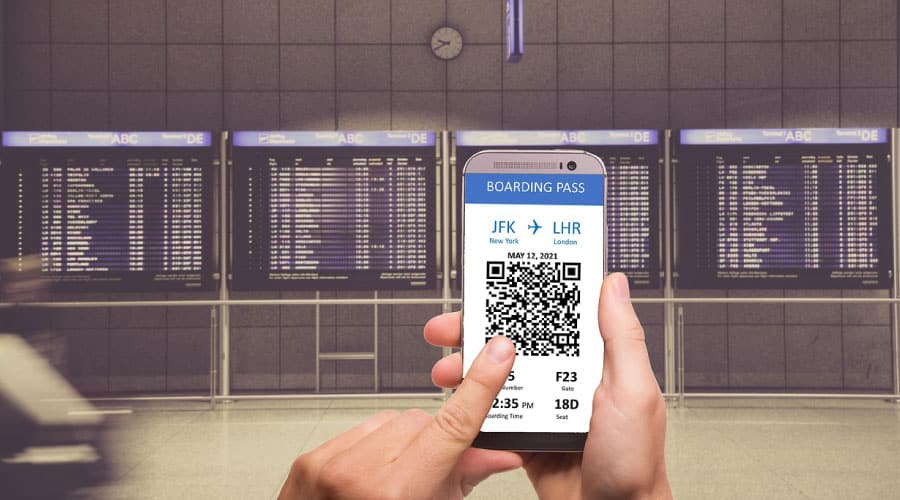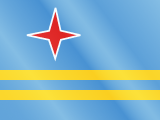The international travel checklist every traveler needs
Use this international travel checklist to prepare your passport, visa, travel insurance, apps, internet access, and more before your trip.
Heading abroad can be exciting, but let’s face it — there’s a lot to get done before your flight takes off. That’s where this ultimate international travel checklist comes in. It’s designed to help you get everything sorted — from documents and bookings to insurance and connectivity — before your international trip even begins.
Whether you’re planning your first big adventure or you travel often, making a checklist before international travel will help you stay organized, avoid last-minute stress, and make sure nothing important slips through the cracks.
Want something to check off as you go? Download our international travel checklist PDF and take it with you on the go.


1. Check your passport and visa requirements
Before any international trip, one of the first things to check is your valid passport. Most countries require your passport to be valid for at least six months beyond your planned return date. Double-check the expiration date, and if it’s cutting it close, consider renewing now — processing times can take weeks.
Next, research your visa requirements. Every foreign country has its own rules based on your nationality, the length of your stay, and your reason for travel. For example, some destinations offer visa-free entry, while others require applying in advance or obtaining a visa on arrival.
As part of your passport preparation, double-check the following:
- Your passport has enough blank pages for entry stamps
- You’ve gathered any supporting documentation required for your entry (e.g., proof of accommodation or return ticket)
- You’ve saved a copy of your passport information page — both digitally and on paper
It’s worth getting this sorted early — nothing derails a trip abroad like being turned away at the airport.

2. Gather your travel documents
When you’re traveling abroad, having the right travel documents on hand can save you a lot of time and stress — especially if your travel plans change or issues come up during your trip.
As part of your international travel documents checklist, here are a few must-haves to pack or store digitally:
- Your driver’s license or another form of government-issued ID (for domestic flights or car rentals)
- An international driving permit if you plan on renting a car and/or driving.
- Copies of your flight confirmations, hotel reservations, and insurance policies
- A list of emergency contacts, both printed and saved to your phone
- Your contact details written on paper, in case your phone is lost or stolen
Try to keep both physical copies (in your carry-on) and digital versions stored in a secure cloud app like Google Drive or Dropbox. That way, you’re covered even if your device is lost or damaged.

3. Book your flights and accommodations
Once your documents are sorted, the next big step is confirming your flights and accommodations. Booking early usually means better prices, more options, and fewer headaches as your travel dates get closer.
In some cases, your destination country may ask for proof of where you’re staying as part of your visa process or at immigration. That’s why it’s smart to have a travel itinerary saved and ready to show — even if you’re planning to move between locations during your trip.
Booking platforms like Skyscanner, Booking.com, or Hopper can help you compare prices and reserve your stay in advance. And once booked, keep confirmation emails and screenshots saved both online and offline (yes, even printed — just in case).

Once your checklist is sorted, you can start packing smart. Here’s a helpful guide on what to pack for international travel depending on your destination and season.
4. Prepare your finances: cards, currency, and accounts
Money matters — especially when you’re in another country. Before your trip, take time to organize your finances and avoid unpleasant surprises while abroad.
Start by contacting your credit card companies and letting them know your travel dates and destinations. This helps prevent your account from being frozen due to “suspicious activity” overseas.
It’s also smart to check your bank account balance and confirm international ATM access, especially if you plan to use your debit card for cash withdrawals.
And don’t forget about exchange rates. You’ll often get better rates by converting currency at your home bank rather than at airport kiosks or hotels. Carry a small amount of local currency for tips, taxis, or places that don’t accept cards — but avoid carrying too much cash at once.

5. Check vaccinations and health requirements
Some countries require proof of certain vaccinations, like yellow fever or COVID-19, as a condition of entry. Even if it’s not mandatory, it’s worth checking if any health precautions are recommended for your destination country.
Consult a travel clinic or your doctor at least 4–6 weeks before your trip. This gives you time to get any required shots, booster doses, or prescriptions.
Pack a small travel health kit with basics like:
- Hand sanitizer, masks, insect repellent, and a basic aid kit
- Over-the-counter painkillers or anti-diarrhea meds
- Prescription medications (plus a copy of the prescription from your home country)
6. Get insurance for peace of mind
If there’s one thing that can protect your journey— and your wallet — it’s international travel insurance. From delayed flights to lost baggage, a good policy covers the kinds of setbacks that could otherwise ruin your holiday.
Many countries now also require proof of health insurance as a condition of entry. Even if it’s not mandatory, it’s still a smart move. Medical care in a foreign country can be expensive, and insurance gives you the peace of mind that you’re covered in case of medical emergencies or unexpected illness.
When comparing policies, look for plans that include:
- Emergency medical treatment
- Trip cancellations or interruptions
- Lost or stolen luggage
- Legal and liability protection
It’s a small investment that can make a big difference if anything goes wrong during your international travel.
7. Download essential apps and travel tools
Before traveling abroad, make sure your phone is ready for the journey too. Downloading key apps ahead of time will help you stay organized and avoid relying on data or WiFi when you need information the most.
Here are a few essentials worth having:
- Google Maps (or Maps.me): Download offline maps of your destination country so you can navigate without internet.
- Translation tools like Google Translate or Microsoft Translator: Great for communicating when there’s a language barrier
- Booking apps (e.g., Airbnb, Booking.com, or your airline’s app): Keep all your reservations in one place
- Currency converters: Track exchange rates and avoid getting overcharged
- Cloud storage apps (e.g., Dropbox or Google Drive): Back up your documents, itinerary, and travel checklist international in case something gets lost
A few minutes of prep before your flight can save hours of stress once you land — especially in places with limited connectivity.
If you need to stay in touch with friends or family abroad, here’s a quick guide on how to make international calls while traveling.
8. Take care of your internet connection
Staying connected while traveling abroad isn’t just convenient — it’s essential. Whether you’re navigating a new city, looking up entry requirements, or texting loved ones, you’ll want reliable internet access from the moment you land.
Instead of scrambling to buy a local SIM at the airport, you can prepare in advance with an eSIM for global coverage. With an international eSIM from Holafly, your eSIM takes just minutes to install, doesn’t require a physical card, and works in over 200 destinations.
If you’re planning international travel that last longer than a few weeks, check out Holafly Connect — our new monthly eSIM plan. It’s perfect for digital nomads, students, or anyone on an extended trip abroad, offering flexible coverage with recurring data in multiple countries.
With Holafly, you can:
- Avoid high roaming fees
- Skip the hassle of physical SIMs
- Activate your plan instantly via QR code
- Stay connected across borders
Check if your phone is eSIM-compatible and unlocked for international use, and you’ll be ready to go — no stores, no delays.
Key takeaway: Be prepared, not stressed
A little planning goes a long way — and this ultimate international travel checklist is your shortcut to feeling confident and in control before your next big trip.
By sorting out your documents, finances, insurance, and connectivity ahead of time, you’ll spend less time worrying and more time enjoying the journey.
Keep this checklist before international travel close, and remember: preparation means peace of mind. And when it comes to staying connected, Holafly’s international eSIMs — including long-term plans with Holafly Connect — can help you stay online wherever your adventure takes you.
International packing checklist FAQs
You’ll need a passport, and depending on your destination, possibly a visa. Other essential travel documents include proof of accommodation, return flights, and insurance. Keep digital and physical copies of your passport info page and key details like important contacts. These will be useful if you’re asked for documents at the border or during your trip.
Start with your passport, visa, and insurance. Then add accommodation details, flights, currency, and offline apps like maps and translators. Don’t forget essentials like chargers and a secure way to access your money. A digital eSIM like Holafly helps you stay connected. This first time international travel checklist helps you feel prepared and confident every step of the way.
Yes, travel insurance is highly recommended — and in many countries, it’s mandatory. It covers medical emergencies, trip cancellations, and lost or stolen luggage. Even a small incident abroad can be expensive, so having coverage gives you peace of mind and financial protection throughout your trip
The best way to stay online while traveling abroad is with an international eSIM like Holafly. It works instantly, covers over 200 destinations, and doesn’t require a physical SIM card. For longer stays or multi-country trips, Holafly Connect offers a monthly data plan to keep you connected across borders.
Try only pack essentials — it saves on luggage fees and makes moving around easier. For long trips, use a carry on bag with all essentials: medication, snacks, a power bank, and a travel pillow. Staying comfortable and prepared makes your journey smoother from the start.














































 Pay
Pay  Language
Language  Currency
Currency 


















 No results found
No results found

















